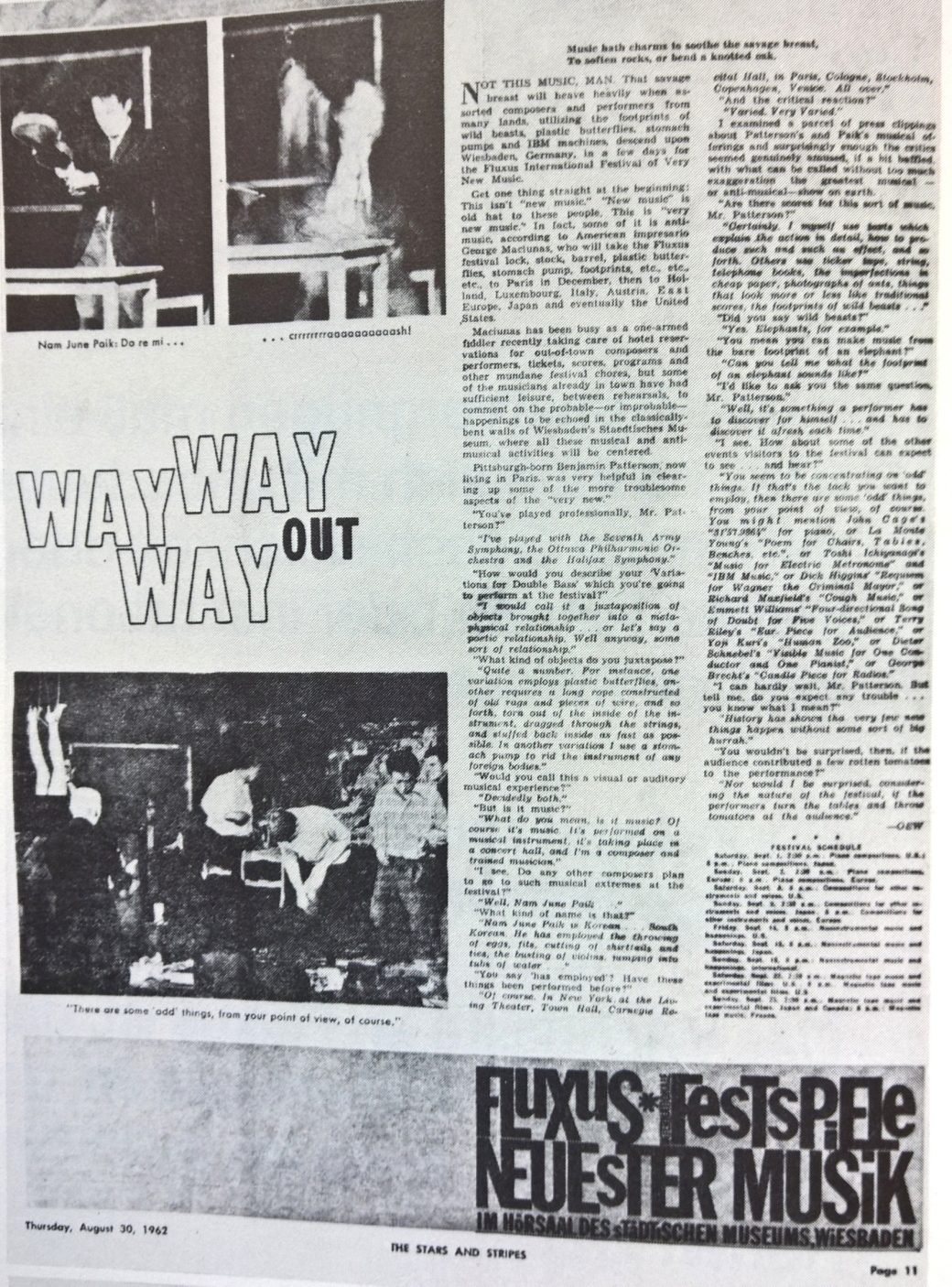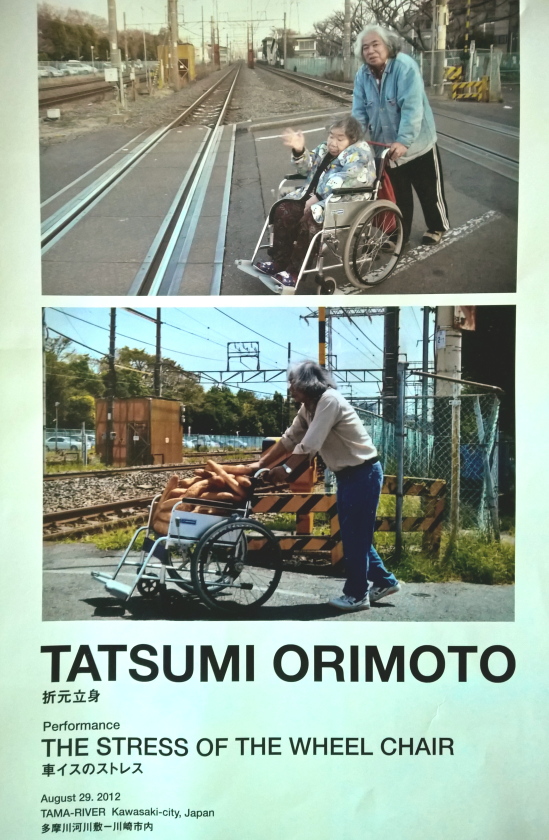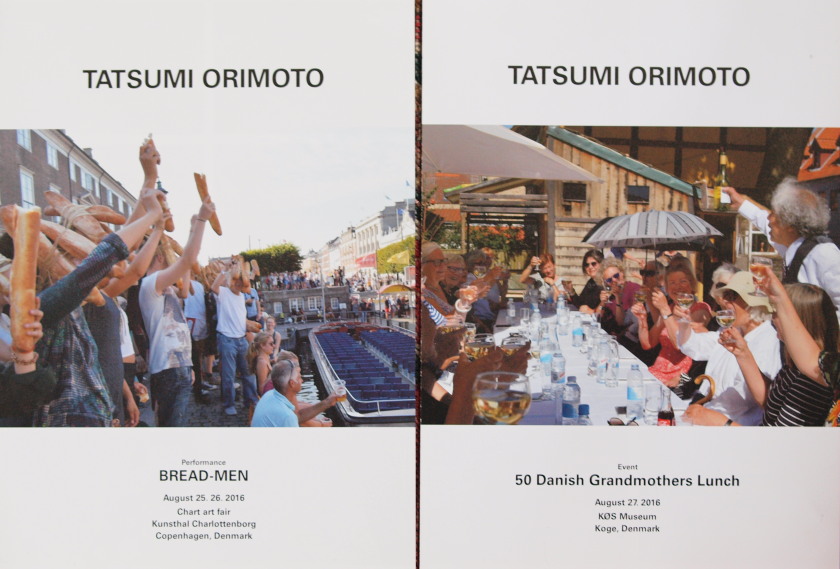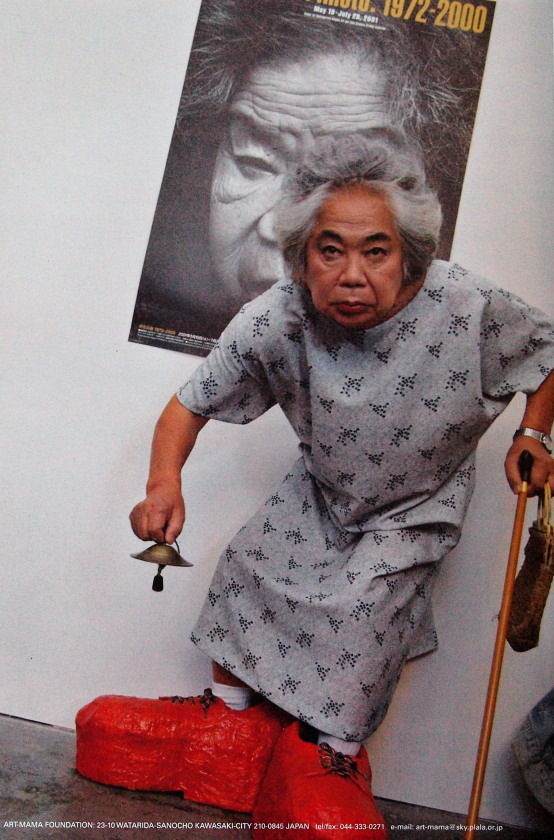
Faksimilierte Seite des Artikels von Emmett Williams aus „The Stars and Stripes“ vom 30. Aug. 1962, S. 11. Es gilt als das erste Dokument über Fluxus in Deutschland. Mit einer kurzen Einleitung (S.81) ist es im Katalog 1962 Wiesbaden FLUXUS 1982, Katalog Wiesbaden, Kassel, Berlin 1982, auf S. 80 abgebildet.
Vor 55 Jahren erschien der erste Text über FLUXUS von Emmett Williams in STARS AND STRIPES, einer Zeitschrift für US-Militärangehörige in Europa erschienen ist. Mit einem Text über Neue Musik und Happenings mit dem Titel „WAY WAY WAY Out“ warb er für das Festival: Fluxus * Festspiele Neuester Musik im Hörsaal des Städtischen Museums in Wiesbaden (ab 1. September 1962). Der Text ist leicht und humorvoll mit Passagen aus einem „satirisch-fiktiven Interview“ aufgelockert. Auf die Bedenken seines Gesprächspartners Ben Patterson, das Publikum könnte faule Tomaten beisteuern, gibt Williams zurück, dass es ihn nicht überraschen würde, wenn stattdessen die Performer Tomaten ins Publikum werfen würden.
Neben dieser Ankündigung von Konzerten der verrücktesten Neuesten Musik hätten unbefangene Leser der Tageszeitung für die amerikanischen Streitkräfte in Europa die Szenen von Gewalt auf den den Text begleitenden Fotos bemerken konnen. Auf der Abbildung oben links zerschlägt ein Mann – es ist Nam June Paik – eine Violine auf einem Tisch und auf dem Foto links unten hängt eine Frau kopfüber. Das wirkt brutal und kann durchaus an Folterszenen erinnern, denn keine 20 Jahre zuvor war der italienische Diktator Mussolini von einer aufgebrachten Menge kopfüber an einem Laternenpfahl aufgehängt worden. Nicht zu reden von den Spuren der Gräuel, die die Soldaten der Alliierten in Europa, China und Korea zu Gesicht bekamen.





